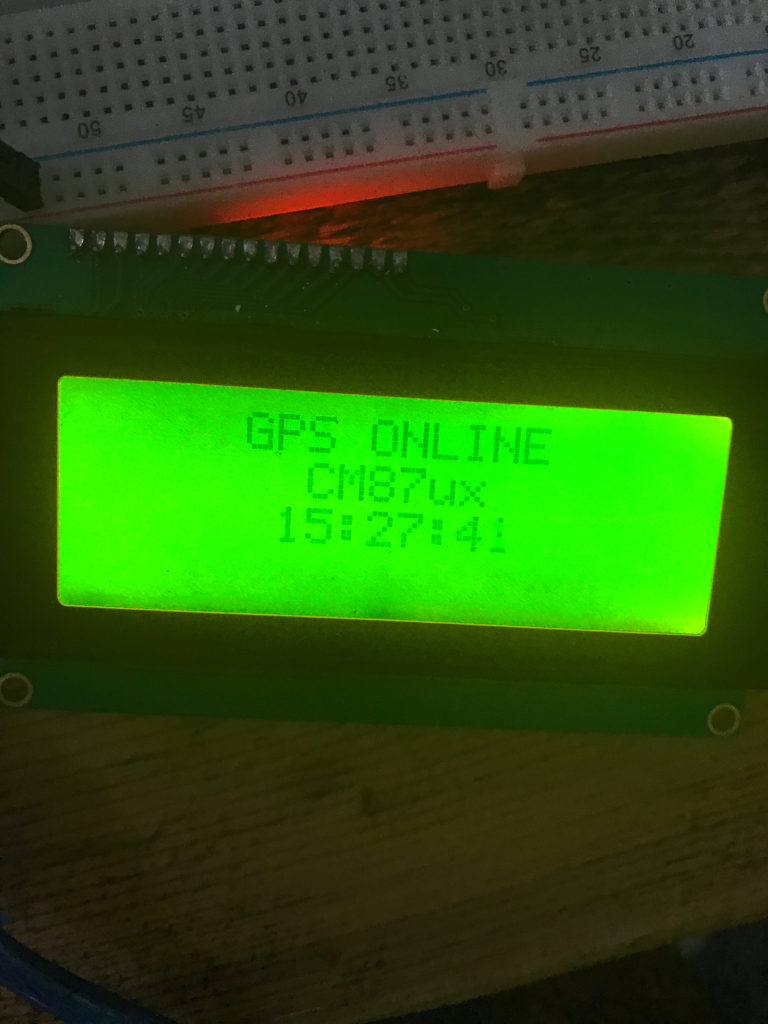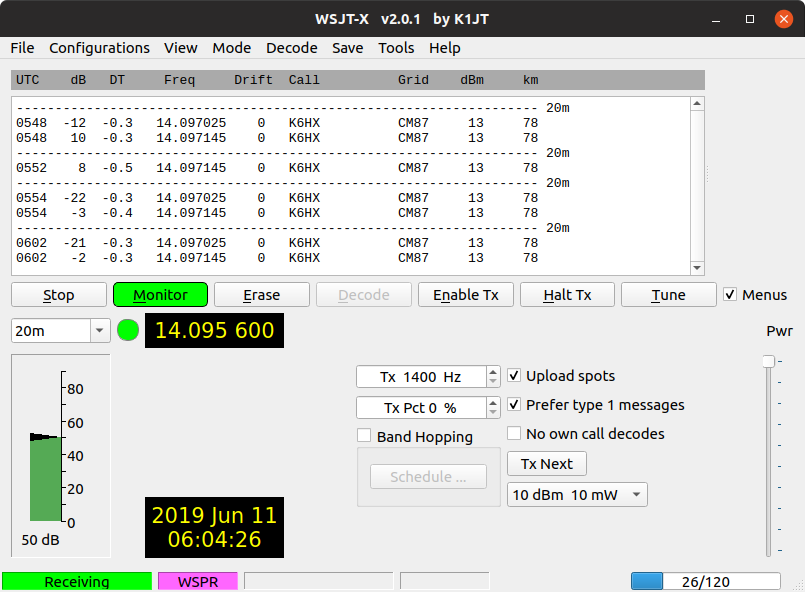A new beacon is beckoning…
I’ve been mostly working in my workshop on various projects related to woodworking, but last week one of my coworkers reminded me that Field Day, the yearly day where radio amateurs take their equipment into parks away from the comfort and ready electrical supply and operate under conditions which are meant to simulate (at least someone) operating under emergency conditions. In the past, I haven’t much paid attention to it, except perhaps to go see what people are up to in several local parks.
This year I thought it might be fun to resurrect some of my past ideas/skills and at least do some minor bits of operating. But I also thought it would be fun to use some of my homebrewing skills to bodge something together as a kind of tech demo and excuse to tinker in the shop.
A decade ago, I went through a phase where I was interested in beacon operations, operating a small, low-powered, automated transmitter that could be heard around the world. This was no doubt inspired by Bill Meara’s chatting about it on his Soldersmoke podcast, and took the form of both QRSS (low speed CW) and WSPR (Weak Signal Propagation Reporter) transmissions. I first started doing WSPR back in 2008 by generating the necessary tones and playing them back through iTunes into my FT-817.
At various times I started homebrewing small transmitters together, but I never really got anything off the bench and into operation.
But I’m hoping to do better between now and Field Day.
Over the years, I’ve accumulated a lot of parts that should make this possible, or even easy. So currently on my desktop I’ve got the following parts:
- An Arduino Uno. I could use any of a number of other microcontrollers, but the Uno is certainly capable. I may replace it with an Arduino Nano in the final version.
- An Adafruit SI5351A breakout board. In the past I’ve tinkered around with simple low powered crystal oscillators, but this board is insanely cheap ($8) and can generate three different oscillator signals simulataneously. The board has a great driver written by NT7S that makes it dead easy to control.
- A cheap GPS module. Ideally, our beacon needs to know where it is and what time it is, and the GPS module can provide both. I’ve had a couple of these in my parts bin, sitting unused, but I soldered some female headers onto the wiring harness and smeared a bunch of hot glue on it to make a crude header, and it worked perfectly.
- A 4×20 LCD display. I had all sorts of different display technologies available, but this one is larger than most and easy to display.
And… that’s about all you need (other than software) to make a WSPR beacon. So that’s what I did. The program boots, syncs with the GPS and waits for it to get the time and position, and then puts the Maidenhead grid and time on the display:

The program then waits for even numbered minutes to start, and sends the appropriate code sequence. Across my living room, I had my FT-817 setup (without an antenna) and it could easily hear the oscillator running, and it decoded the appropriate message.

There is still quite a bit of work left to do before Field Day.
- I need to construct a harmonic filter for the output. I took a quick look at the output, and it was a pretty triangular waveform, definitely not appropriate for sending out over a real antenna, even at the 20mw or so output level it will have.
- I need to bodge together an antenna. I have a pair of 20m whip antennas. I could use either one as a vertical, or I could use an MFJ-347 that I have in my parts box to construct a mini-whip dipole. Not sure what will be best. That will probably be this weekend’s work.
- I should get a case to protect it and transport it. Right now it’s a pile breadboard with a bunch of wires hanging off it. I’ll probably just make a little wooden half box to mount the LCD, switches, and connectors, and then just double stick tape everything else.
- The software still needs some work.
That’s all I have time to write up this morning. Stay tuned for more updates and probably video from Field Day where I show this in operation.
I recall burning three or four weeks of a sabbatical getting Saccade.com on the air with Wordpress. So much tweaking…